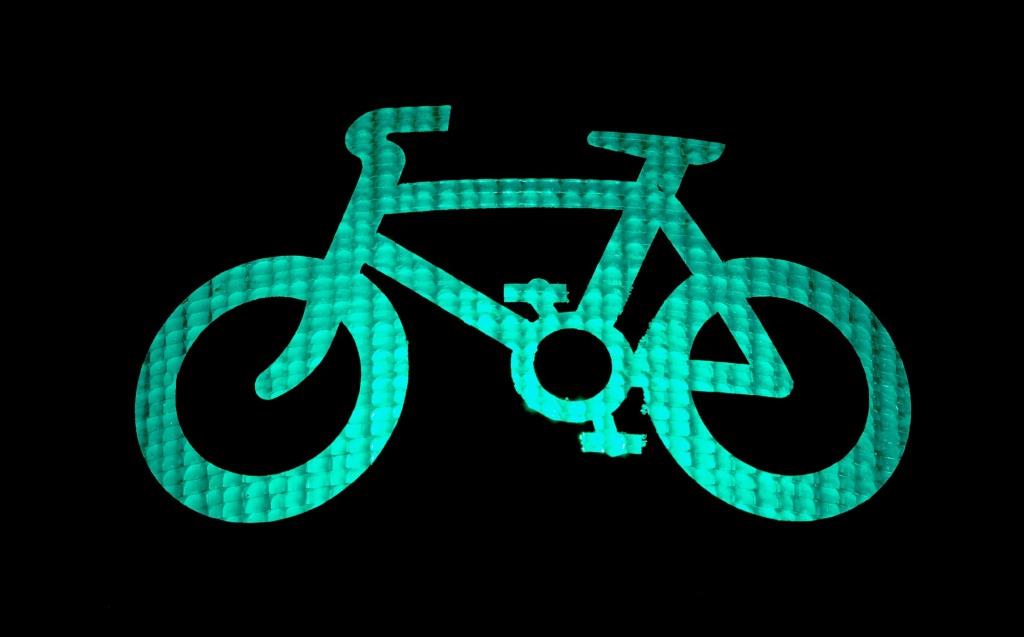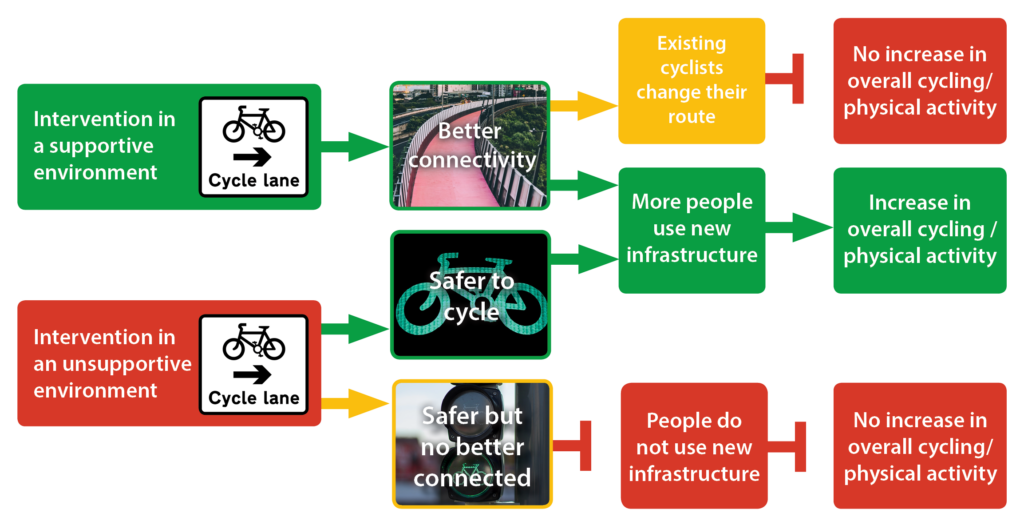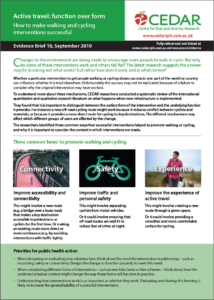How to make walking and cycling interventions successful – September 2019
Changes to the environment are being made to encourage more people to walk or cycle. But why do some of these interventions work and others fall flat? The latest research suggests the answer may lie in asking not what works? but rather “how does it work, and in what context?”
.
Jump to:
- Three common ‘hows’ to promote walking and cycling
- The power of context
- Priorities for public health action
- References and resources
Whether a particular intervention to get people walking or cycling shows success in one part of the world or country can influence whether it is tried elsewhere. Unfortunately the success may not be replicated because of a failure to consider why the original intervention may have worked.
To understand more about these mechanisms, CEDAR researchers conducted a systematic review of the international quantitative and qualitative research literature on what happens when new infrastructure is implemented.
They found that it is important to distinguish between the surface form of the intervention and the underlying function it provides. For instance a new off-road cycling route might work because it reduces conflict between cyclists and motorists, or because it provides a more direct route for cycling to key destinations. The different mechanisms may affect which different groups of users are affected by the change.
The researchers identified three common ways that successful interventions helped to promote walking or cycling, and why it is important to consider the context in which interventions are made.
Three common ‘hows’ to promote walking and cycling

Connectivity
Improve accessibility and connectivity
This might involve a new route (e.g. a bridge over a busy road) that makes a key destination accessible to pedestrians or cyclists for the first time. Or making an existing route more direct or more continuous (e.g. by avoiding intersections with traffic lights).

Safety
Improve traffic and personal safety
This might involve separating cyclists from motor vehicles.
Or it cold involve ensuring that off-road routes are well lit to reduce fear of crime at night.

Experience
Improve the experience of active travel
This might involve creating a new route through green space.
Or it cold involve providing a smoother and more comfortable surface for cycling
The power of context
Always consider the context in which a given intervention and mechanism for change are operating. The worked examples below show how the same sort of intervention could have different outcomes in different places.

Different context, similar outcome
In some cases, supportive and unsupportive contexts can cause similar interventions to produce the same positive outcome, but through different mechanisms. In a supportive environment with good existing infrastructure, the main function of a new segregated cycle path may be to create faster connections, causing more people to cycle. In an unsupportive environment characterised by heavy traffic, on the other hand, improved safety may be the main function of the new cycle path – again encouraging more people to cycle.
Same context, different outcomes
Similar contexts can bring about different outcomes depending on who is affected by the change. In a supportive environment, a new segregated cycle path might predominantly improve the connectivity (and experience) of cycling for existing cyclists, rather than tipping the balance enough to attract new cyclists.
No trigger
Unsupportive contexts can mean that mechanisms of change are not triggered at all. A new cycle lane might be safer (or provide a better experience) but if it fails to link people’s homes with the key destinations they need to reach, it is unlikely to attract either new or existing cyclists.
Priorities for public health action
- When designing or evaluating new infrastructure, think about the need the intervention is addressing – such as improving safety or connectivity. Design the change to function properly to meet this need.
- When considering different forms of intervention – such as new bike lanes or hire schemes – think about how the social and physical context might change the way these forms will function in practice.
- Understanding how interventions work is as important as whether they work. Evaluating and sharing this learning is likely to increase the generalisability of successful interventions.
References and resources
- Can changing the physical environment promote walking and cycling? A systematic review of what works and how. Panter J et
al, 2019, Health & Place. DOI: 10.1016/j.healthplace.2019.102161 - Build it and they will come? Study sheds light on how new walking and cycling routes change behaviour. CEDAR, 2015.
- NICE guideline NG90: Physical activity and the environment. March 2018.
- Public Health England: Spatial planning for health: evidence review. July 2017.
- Sport England. Active Travel & Physical Activity Evidence Review (pdf). May 2019.
- NIHR: Moving Matters – Interventions To Increase Physical Activity. July 2019.
Please cite this Evidence Brief as: UKCRC Centre for Diet and Activity Research (CEDAR), Evidence Brief 18 – How to make walking and cycling interventions successful – September 2019. www.mrc-epid.cam.ac.uk/resources/policy-resources/evidence-briefs/eb-active-travel-function-over-form

 MRC Epidemiology Unit
MRC Epidemiology Unit